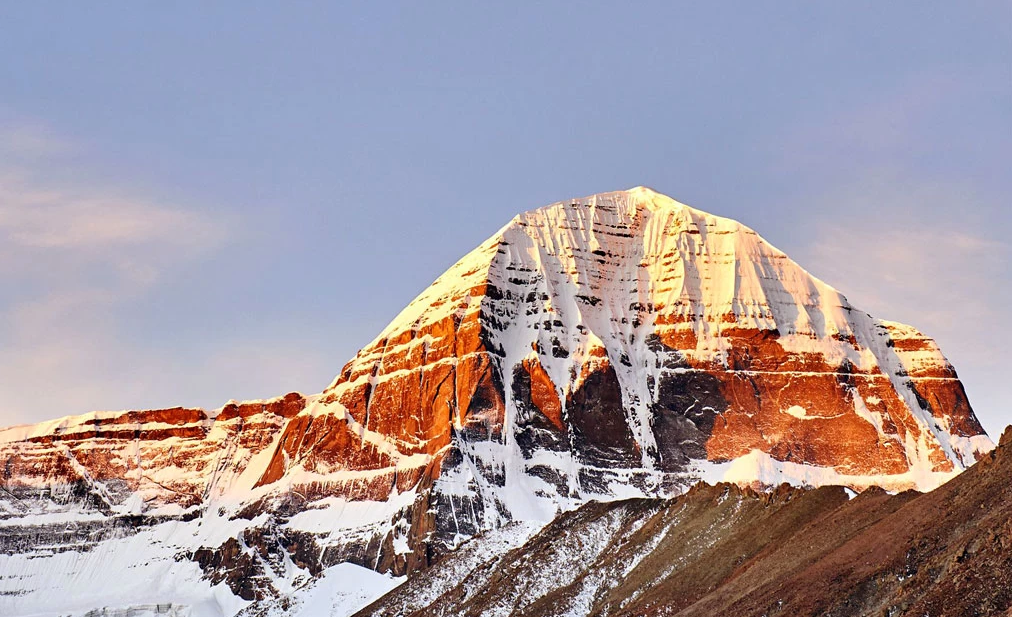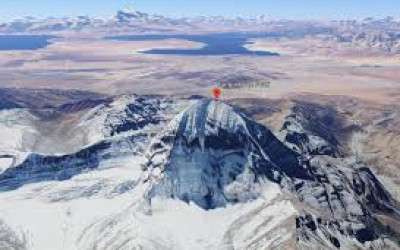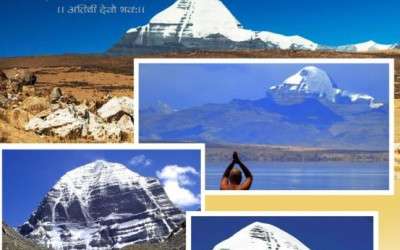- Registered Company
- More than Decade of Experience
- Customer Satisfaction is our motto
Trip Facts
-
Group Size1- 15 pax
-
Max Elevation4900 m
-
GradeModerate
-
TransportationFlight/ Jeep
-
AccommodationHotel/ Lodge
-
Trip Length17 Days
-
Best MonthSpring and Autumn
-
WIFIAvailable
-
Trip ModeNormal
-
MealAll Meals on Trek
-
Trekking StyleHiking
-
Start FromKathmandu
-
End PointKathmandu
Outline Itinerary
Day 01: Day 01: Arrival in Kathmandu (1,400m) and Transfer to Hotel
Day 02: Visa Application at Chinese Embassy and Half-Day Pilgrimage Sightseeing
Day 03: Free Day for Personal Activities
Day 04: Free Day for Personal Activities and Evening Yatra Briefing
Day 05: Fly to Lhasa (3,656m) and Transfer to Hotel
Day 06: Lhasa Sightseeing (3,656m)
Day 07: Drive from Lhasa to Shigatse (3,800m)
Day 08: Drive from Shigatse to Saga (4,640m)
Day 09: Drive from Saga to Mansarovar (4,588m)
Day 10: Drive from Mansarovar to Darchen (4,640m)
Day 11: Drive to Yamadwar (4,780m) and Holy Trek to Dirapuk (4,900m)
Day 12: Holy Trek to Zuthulpuk (4,750m)
Day 13: Holy Trek Near Darchen and Drive to Saga (4,640m)
Day 14: Drive to Shigatse (3,800m) or Drive to Kyirong (2,700m)
Day 15: Drive to Lhasa (3,656m)
Day 16: Fly Back to Kathmandu
Day 17: Departure from Kathmandu
Altitude Map
This Altitude Map shows highest alttitude you will trek to each day.
Package Included
- One or two nights’ accommodation at Hotel Prayang or a similar hotel, shared basis, with a common toilet facility.
- Two nights’ accommodation at Hotel Saga or a similar hotel, shared basis, with an attached toilet facility.
- Two nights’ accommodation in a guest house at Darchen.
- One or two nights’ accommodation in a guest house at Manasarovar.
- One night’s stay at Hotel Dirapuk or a guest house.
- One night’s accommodation at Zuthulpuk in fixed camps.
- Support truck for carrying baggage, food, and camping equipment for the pilgrims.
- Camping arrangements and all meals provided by the Nepalese Sherpa crew on the Tibet side.
- Sleeping bags for the journey.
- Nepalese team leader (English-speaking) from Kathmandu and an English-speaking Tibetan guide from the Kirung border to accompany you during the Kailash Manasarovar Yatra.
- Yak and Yak men to carry one bag per person for the Kailash Parikrama.
- Entrance fees for all monasteries.
- Standard Tibet visa for the yatra.
- One duffle bag per person.
- One returnable jacket per person for the Kailash Manasarovar yatra.
- Each participant will receive a completion certificate for the Kailash Manasarovar Yatra.
- Insurance coverage for our Sherpa crew.
Package not Includes
- Travel and medical insurance.
- Rescue and evacuation costs in case of an emergency.
- Insurgent fee (approximately INR 500 per person).
- Soft/hard drinks, photography charges, porter services at airports/hotels, laundry, tips, phone calls, and other personal expenses.
- Any other items not listed in the inclusions.
Trip Overview
The Mount Kailash & Lhasa Tour is among the most popular tours for religious and adventurous visitors. This 17-day tour guides you through many picturesque terrains in the Himalayas. At the tour's high point, you are taken to Mount Kailash, the holy mountain at 6,638m, and Mansarovar Lake.
The two are sacred to Hindus, Buddhists, Jains, and Bon believers. People go to Kailash to purify their souls and achieve spiritual serenity.
During the Mount Kailash & Lhasa Tour, you will have an opportunity to see the wonderful parts, such as stunning snowy peaks and beautiful valleys, and meet with wonderful representatives of Tibetan culture.
The tour starts when people gather in large numbers to prepare for the journey they are about to embark on—Kathmandu.
From there, you will take a flight to Lhasa, discover its history and culture, and then drive through the stunning countryside of Tibet to finally reach Mount Kailash. The tour also involves a physically stimulating but stimulating Kora, a circumambulation around Kailash, an essential activity in the pilgrimage.
The Mount Kailash Mansarovar Tour is a religious trip, a chance to be with nature or worship and get Some Great Experience of Tibetan culture. Able to interact with friendly people, see breathtaking old monasteries and learn about historical traditions.
Mount Kailash & Lhasa Tour becomes unforgettable for all who dare to arrive at this place, combining adventurous, religious, and cultural tours. Whether in a spiritual quest or an ability to view the Himalayas up close, this tour is to be noticed.
Highlights of Mount Kailash Tour Via Lhasa- For 2025/2026
- Discover the rich history and culture of Lhasa
- Marvel at the stunning architecture of this UNESCO site
- Walk around the famous pilgrim circuit in Lhasa
- Trek Around Mount Kailash (Kora)
- Enjoy the Serenity of Mansarovar Lake
- Discover Tibetan Culture and Traditions
- Explore sacred sites like Tashilhunpo Monastery
- Witness Breathtaking Himalayan Landscapes
- Experience personal growth and spiritual connection
- Take photos of stunning landscapes and cultural moments
Detail Itinerary
Day 01: Arrival in Kathmandu (1,400m) and Transfer to Hotel
Upon arriving in Kathmandu at an altitude of 1,400 meters, your guide will greet you and transfer you to your hotel. This day is dedicated to helping you settle in after your journey.
You can rest, explore the bustling Thamel area, or enjoy a tasty meal at a local restaurant. The sights and sounds of Kathmandu will immerse you in Nepal's rich culture. In the evening, take the opportunity to relax and prepare for the Kailash Mansarovar yatra via Lhasa ahead.
Not Included
Hotel in Kathmandu
1400m
Visa Application at Chinese Embassy and Half-Day Pilgrimage Sightseeing
After breakfast, you will visit the Chinese Embassy to apply for your visa, a necessary step in your journey to Tibet. The visa application may take a few hours, so ensure you have all required documents ready. After completing your visa application, you will enjoy a half-day sightseeing tour of Kathmandu.
You might visit sacred sites like Pashupatinath Temple and Swayambhunath Stupa, which are critical for their spiritual significance. In the afternoon, you'll return to your hotel to relax and prepare for the next day.
Breakfast, Lunch, Dinner
Hotel in Kathmandu
1400m
Free Day for Personal Activities
Today is a free day for you to explore Kathmandu on your own. You can shop for souvenirs, visit more temples, or enjoy the local cuisine. Popular spots include the Thamel for shopping and Boudhanath Stupa for a peaceful atmosphere. Take this day to rest and recharge for your upcoming journey. Ensure you drink plenty of water to stay hydrated and adjust to the altitude.
Breakfast, Lunch, Dinner
Hotel in Kathmandu
1400m
Free Day for Personal Activities and Evening Yatra Briefing
You have another free day to explore or relax in Kathmandu. Use this time for any last-minute shopping or sightseeing you may have missed.
In the evening, you will listen to a briefing about the Yatra, where your guide will share important information regarding the pilgrimage, including safety protocols and expectations for the Kailash Mansarovar yatra via Lhasa. After the briefing, return to your hotel for the night.
Breakfast, Lunch, Dinner
Hotel in Kathmandu
1400m
Fly to Lhasa (3,656m) and Transfer to Hotel
Altitude: 3,656m (Lhasa)
Flying Time: Approximately 1.5 hours
Today, you will take a morning flight from Kathmandu to Lhasa, about 3,656 meters above sea level. The flight will deliver stunning views of the Himalayas, so have your camera ready.
Upon arrival in Lhasa, you will be met and transferred to your hotel. The rest of the day is reserved for acclimatizing to the higher altitude. Drink plenty of water and rest to help your body adjust. You might enjoy a leisurely walk around your hotel area in the evening.
Breakfast, Lunch, Dinner
Hotel/ Lodge
3656m
Lhasa Sightseeing (3,656m)
Altitude: 3,656m (Lhasa)
Total Distance: Varies by itinerary
Driving Hours: Approximately 4-5 hours
Today is packed with sightseeing in Lhasa. You will visit important sites like the Potala Palace, a UNESCO World Heritage Site and the former winter residence of the Dalai Lama. Next, you'll head to Jokhang Temple, the most sacred temple in Tibetan Buddhism, followed by a stroll around Barkhor Street, where you can see local shops and street vendors. Throughout the day, you will gain insights into Tibetan culture and religion. Return to your hotel in the evening for rest.
Breakfast, Lunch, Dinner
Lodge/Hotel
3656m
Drive from Lhasa to Shigatse (3,800m)
Altitude: 3,800m (Shigatse)
Total Distance: 260 km (from Lhasa to Shigatse)
Driving Hours: Approximately 6-7 hours
After breakfast, you will venture on a scenic drive to Shigatse, at an altitude of 3,800 meters. The drive will take around 6 to 7 hours and take you through beautiful Tibetan landscapes.
Along the way, you may stop to enjoy stunning views of the mountains and rivers. Once you arrive in Shigatse, you will check into your hotel. In the evening, you can explore the local area or relax.
Breakfast, Lunch, Dinner
Lodge/Hotel
3800m
Drive from Shigatse to Saga (4,640m)
Altitude: 4,640m (Saga)
Total Distance: 450 km (from Shigatse to Saga)
Driving Hours: Approximately 7-8 hours
Today, you will drive to Saga at an altitude of 4,640 meters. The journey will take about 7 to 8 hours as you travel through breathtaking scenery and cross several mountain passes. You'll have opportunities to see traditional Tibetan nomadic lifestyles and beautiful landscapes. Upon arrival in Saga, check into your hotel and take time to acclimatize. Drink plenty of water and rest.
Breakfast, Lunch, Dinner
Lodge/Hotel
4640m
Drive from Saga to Mansarovar (4,588m)
Altitude: 4,588m (Mansarovar)
Total Distance: 370 km (from Saga to Mansarovar)
Driving Hours: Approximately 6-7 hours
After breakfast, you will drive to Mansarovar, located at an altitude of 4,588 meters. This journey will take around 6 to 7 hours. The drive is scenic, and you'll witness stunning views of the surrounding mountains and valleys.
Upon arrival at Mansarovar Lake, take a moment to soak in the beauty of this sacred lake, which holds significant spiritual importance. You will check into a guesthouse and have time to relax by the lake.
Breakfast, Lunch, Dinner
Lodge/Hotel
4588m
Drive from Mansarovar to Darchen (4,640m)
Altitude: 4,640m (Darchen)
Total Distance: 30 km (from Mansarovar to Darchen)
Driving Hours: Approximately 1 hour
Today, you will have a short drive to Darchen, which is at an altitude of 4,640 meters. The drive will take about an hour. Darchen is the starting point for the Kailash Yatra.
Upon arrival, check into your guesthouse and spend the day preparing for the Kailash Mansarovar yatra via Lhasa. You can visit the local area and enjoy the surrounding views, making sure to rest up for the challenging days ahead.
Breakfast, Lunch, Dinner
Lodge/Hotel
4640m
Drive to Yamadwar (4,780m) and Holy Trek to Dirapuk (4,900m)
Altitude: 4,900m (Dirapuk)
Total Distance: 20 km (from Darchen to Yamadwar and then to Dirapuk)
Driving Hours: Approximately 30 minutes
After an early breakfast, you will drive to Yamadwar, the starting point of your holy trek, at an altitude of 4,780 meters. This short drive takes about 30 minutes. Once you reach Yamadwar, you will begin your trek to Dirapuk, about 20 kilometres away.
The trek will take about 6 to 7 hours and lead you through beautiful landscapes with views of Mount Kailash. Upon reaching Dirapuk, you will check into a guesthouse for the night.
Breakfast, Lunch, Dinner
Lodge/Hotel
4900m
Holy Trek to Zuthulpuk (4,750m)
Altitude: 4,750m (Zuthulpuk)
Total Distance: 22 km (from Dirapuk to Zuthulpuk)
Trekking Hours: Approximately 6-8 hours
Today's trek takes you from Dirapuk to Zuthulpuk, located at 4,750 meters. The journey covers about 22 kilometres and will take 6 to 8 hours. This trek is spiritually significant, as you will walk around Mount Kailash. Along the way, you'll enjoy stunning views and may see local pilgrims completing their Kora (circumambulation). Arriving at Zuthulpuk, check into a guesthouse for rest.
Breakfast, Lunch, Dinner
Lodge/Hotel
4750m
Holy Trek Near Darchen and Drive to Saga (4,640m)
Altitude: 4,640m (Saga)
Total Distance: 200 km (from Zuthulpuk to Saga)
Driving Hours: Approximately 4-5 hours
On this day, you will have a short trek from Zuthulpuk to the end of the Kora near Darchen. After completing this sacred trek, you will drive back to Saga at an altitude of 4,640 meters. The movement will take about 4 to 5 hours, allowing you to reflect on your experiences during the Yatra. Once in Saga, check into your hotel and relax for the night.
Breakfast, Lunch , Dinner
Lodge/Hotel
4640m
Drive to Shigatse (3,800m) or Drive to Kyirong (2,700m)
Altitude: 3,800m (Shigatse) or 2,700m (Kyirong)
Total Distance: 450 km (from Saga to Shigatse) or 150 km (from Saga to Kyirong)
Driving Hours: Approximately 7-8 hours (to Shigatse) or 3-4 hours (to Kyirong)
Depending on your choice, you can either drive back to Shigatse, which takes around 7 to 8 hours or head to Kyirong for a shorter journey of about 3 to 4 hours. If you choose Shigatse, you can explore the region more, including Tashilhunpo Monastery. If you opt for Kyirong, enjoy the peaceful landscapes. Once you arrive at your chosen destination, check into your hotel and rest.
Breakfast, Lunch, Dinner
Lodge/Hotel
3800m
Drive to Lhasa (3,656m)
Altitude: 3,656m (Lhasa)
Total Distance: 250 km (from Shigatse to Lhasa) or 130 km (from Kyirong to Lhasa)
Driving Hours: Approximately 4-5 hours (from Shigatse) or 2-3 hours (from Kyirong)
Today, you will drive back to Lhasa. The drive from Shigatse will take about 4 to 5 hours, while the journey from Kyirong will take about 2 to 3 hours. Enjoy the stunning Tibetan scenery along the way. Upon reaching Lhasa, check into your hotel and spend the evening leisurely, reflecting on your journey and relaxing.
Breakfast, Lunch , Dinner
Lodge/Hotel
3656m
Fly Back to Kathmandu
Altitude: 1400 m
Flying Time: Approximately 1.5 hours
After breakfast, you will be led to the airport for your flight back to Kathmandu. Enjoy the stunning views of the mountains as you fly over the Himalayas. Upon arrival in Kathmandu, you will be transferred to your hotel.
You can spend the rest of the day relaxing or exploring more of the city. Enjoy your last evening in Nepal by indulging in some local cuisine or shopping for souvenirs.
Breakfast, Lunch, Dinner
Hotel in Kathmandu
1400m
Departure from Kathmandu
On your final day in Kathmandu, you will check out of your hotel and be transferred to the airport for your departure flight. If time remains, you might explore more of the city or enjoy a last-minute shopping spree before heading home, taking the memories of your incredible journey with you.




















